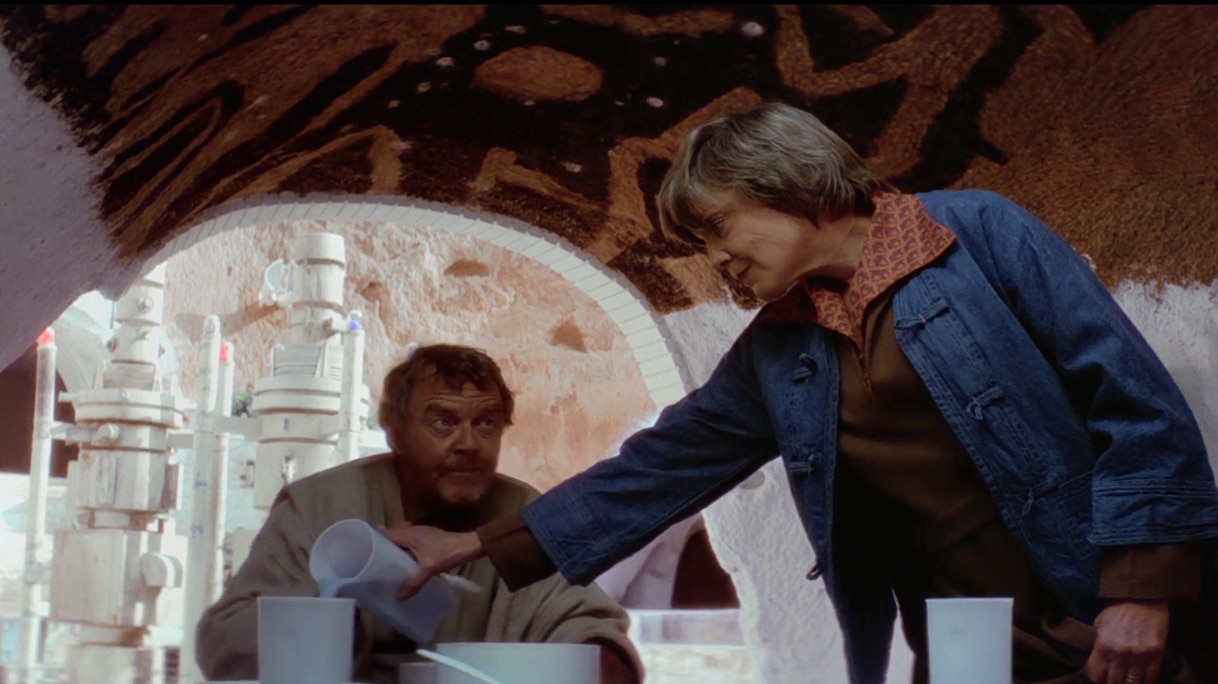Create a free profile to get unlimited access to exclusive videos, sweepstakes, and more!
Star Wars' blue milk could become a reality with rare natural dye found in cabbage

Aside from a handful of berries, the color blue is not a common hue for natural human consumables in the world, yet it seems that the realms of science fiction has adopted the shade when depicting futuristic fare, as seen with the pale blue milk poured on Tatooine in Star Wars.
Other than the artificial coloring that permeates desserts, candy, chewing gum, and sports drinks, those yearning for a cyan-colored bag of popcorn or a nice bowl of robins-egg blue ice cream have had to rely on chemicals until a new enzyme emerged, recently discovered in a most unlikely place... red cabbage.
In a new study published in the online journal Science Advances, a team of researchers led by California's UC Davis has found a unique food-sourced cyan blue dye that might soon replace synthetic bright blue coloring.
Currently, the two most common artificial blue food colorants are brilliant blue (FD&C Blue No. 1) and indigotine (FD&C Blue No. 2), which produce cyan and indigo hues. Check out the frosty blue treat made with this new natural dye..
According to the study, "Finding a natural cyan blue dye equivalent to FD&C Blue No. 1 remains an industry-wide challenge and the subject of several research programs worldwide. Computational simulations and large-array spectroscopic techniques were used to determine the 3D chemical structure, color expression, and stability of this previously uncharacterized cyan blue anthocyanin-based colorant."
Natural pigments offered in a limited spectrum have been derived over the decades from plants, minerals, and sometimes insects, but a reliable non-synthetic source for a brilliant blue has eluded scientists until this new discovery ten years in the making.
“Blue colors are really quite rare in nature – a lot of them are really reds and purples,” explained Pamela Denish, a graduate student working with Professor Justin Siegel at the UC Davis Department of Chemistry and Innovation Institute for Food and Health.
This natural blue dye has been found in a type of molecule called an anthocyanin, something which gives red, purple, blue, or black colorings to a number of flowers and food plants like eggplant, blackberries, raspberries, blueberries, cherries, and red cabbage. It is from this humble cabbage that the blue anthocyanins were revealed amid interspersed properties of red and purple.
By converting other anthocyanins to blue using computational simulations to sort through nearly 100 quintillion potential protein sequences, researchers and food scientists involved in the paper were able to manifest and isolate a designer enzyme that lured red and purple molecules over to the bluer side of the equation.
Per the team, a natural cyan dye with the potency of FD&C Blue No. 1 provides the tempting tint to turn ice cream an attractive shade of blue that should invigorate the food and beverage industries with its striking azure glow.
As expressed in their paper, by "combining modern techniques from analytical chemistry, food science, biochemistry, synthetic biology, color science, and computational chemistry, we found, characterized, and defined a path to production for a naturally sourced cyan blue colorant whose color properties are nearly identical to those of the industry standard brilliant blue FCF (FD&C Blue No. 1). This colorant is also capable of producing superior green colors compared to many existing natural blue colorants."
Right now, researchers have launched a new startup firm called Peak B to commercialize and market this new natural blue food coloring.
Might the future hold a refreshing mug of blue milk for you, with no Bantha mammary glands required?
















